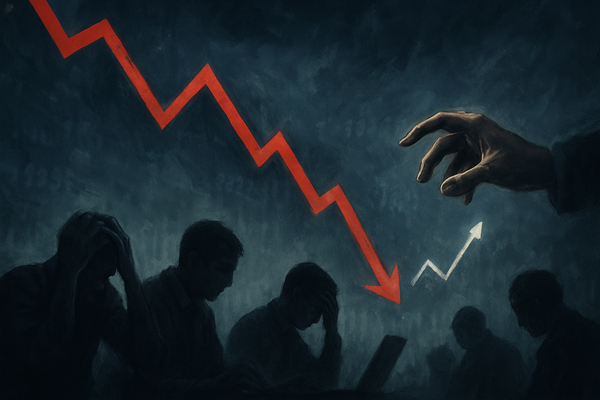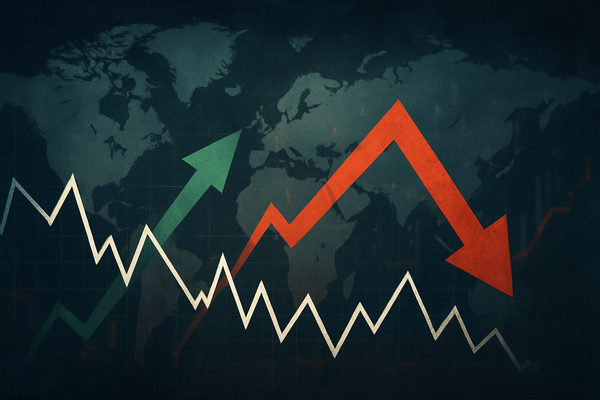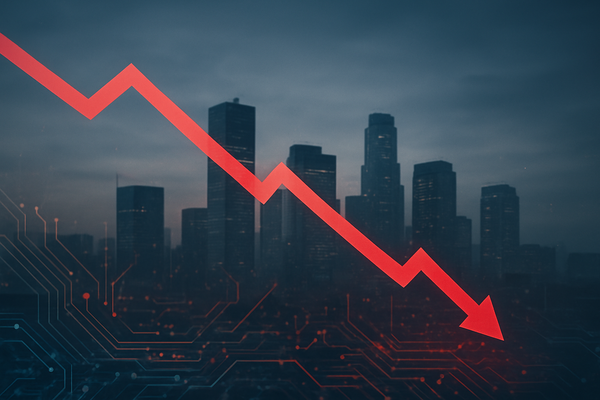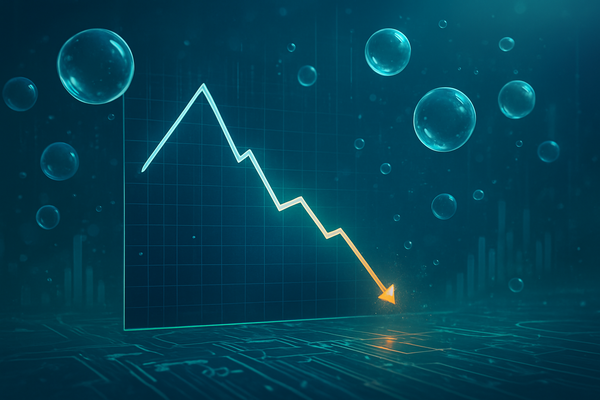Gold and Silver Soar to Unprecedented Highs as Trade Wars Reignite and Rate Cuts Loom
Global financial markets are witnessing a historic surge in precious metals, with both gold and silver reaching all-time high valuations as of October 13, 2025. This remarkable rally is primarily fueled by a potent combination of rekindled US-China trade hostilities and widespread optimism surrounding imminent interest rate cuts by the U.S. Federal Reserve. The dual catalysts have ignited a robust flight to safety, positioning gold and silver as critical hedges against geopolitical uncertainty and economic shifts, with immediate implications for investor sentiment and global market stability.
The precious metals market has been a focal point of investor attention, with gold breaching the significant $4,000 per ounce barrier earlier this month and touching an all-time high of approximately $4,101.05 per ounce on October 13, 2025. Silver, often seen as gold's more volatile counterpart, has outpaced its gains, achieving an unprecedented $51.71 per ounce on the same day. This meteoric rise represents gold's strongest calendar year performance since 1979, while silver has seen a staggering 70% increase year-to-date in 2025, significantly outperforming gold's 50% gain.
The resurgence of US-China trade tensions has been a primary driver of this safe-haven demand. On October 10, 2025, President Trump escalated the trade conflict by threatening a sweeping 100% tariff on Chinese exports and imposing new export controls on critical software, effective November 1. This aggressive stance was a direct response to China's earlier move to tighten export controls on rare earth minerals, a strategic countermeasure that Beijing warned would be met with further retaliation. Although President Trump later moderated his rhetoric, the looming threat of tariffs continues to inject significant uncertainty into global trade, pushing investors towards the perceived security of precious metals.
Concurrently, market expectations for a more dovish monetary policy from the U.S. Federal Reserve have substantially bolstered the appeal of non-yielding assets. Traders are largely anticipating 25-basis-point rate cuts at the Federal Reserve's upcoming meetings in October and December 2025, with a high probability for a cut at the October 28-29 gathering. Lower interest rates diminish the opportunity cost of holding gold and silver, making them more attractive compared to interest-bearing financial instruments. This dovish outlook, coupled with persistent central bank buying as nations diversify their reserves, provides a strong fundamental tailwind for the metals.
Initial market reactions have been overwhelmingly bullish, with major financial institutions like UBS, Bank of America (NYSE: BAC), and Goldman Sachs (NYSE: GS) projecting further gains. BofA has even raised its 2026 gold target to $5,000 per ounce and silver to $65 per ounce, underscoring the strong belief in a prolonged bull market. However, technical indicators suggest both gold and silver are currently in overbought territory (Relative Strength Index readings of 80 and 83 respectively), hinting at potential short-term consolidation or corrections despite the strong long-term outlook. The silver market, in particular, has experienced a "historic market squeeze" in London, leading to tight supply and surging borrowing costs, further contributing to its dramatic price appreciation.
Companies That Stand to Win or Lose from the Market Shifts
The dramatic ascent of gold and silver prices, coupled with the intricate dance of trade tensions and monetary policy expectations, creates a distinct landscape of winners and losers across various sectors. For companies directly involved in precious metals, the environment is overwhelmingly bullish, while those deeply embedded in global supply chains, particularly between the US and China, face significant headwinds.
Foremost among the winners are gold and silver mining companies. With spot prices for both metals at unprecedented highs, these companies are experiencing a direct boost to their revenues and profit margins, assuming production costs remain stable. Major players like Newmont Corporation (NYSE: NEM, TSX: NGT), the world's largest gold producer, are poised for substantial gains, leveraging their extensive operations and projects like Ahafo North. Similarly, Barrick Gold Corporation (NYSE: GOLD) and Agnico Eagle Mines (NYSE: AEM, TSX: AEM) are strong contenders, benefiting from their low-cost assets and robust production profiles. In the silver space, Fresnillo PLC (LSE: FRES), the largest primary silver producer, and First Majestic Silver (NYSE: AG, TSX: FR) are seeing their fortunes rise significantly. Precious metals streaming companies, such as Wheaton Precious Metals (NYSE: WPM, TSX: WPM), also thrive in this environment, as they provide upfront capital to miners in exchange for a fixed share of future production, allowing them to capitalize on rising prices without direct operational risks.
The surge has also created a favorable climate for Precious Metals Exchange Traded Funds (ETFs). Funds like the SPDR Gold Trust (NYSEARCA: GLD) and iShares Silver Trust (NYSEARCA: SLV) directly track the price of physical gold and silver, respectively, and have seen their net asset values soar alongside the metals. Additionally, ETFs that invest in mining companies, such as the VanEck Gold Miners ETF (NYSEARCA: GDX), offer investors leveraged exposure to the sector's performance.
Beyond precious metals, the anticipation of interest rate cuts by the Federal Reserve is a significant boon for certain sectors. Homebuilders like PulteGroup (NYSE: PHM) and D.R. Horton (NYSE: DHI) are expected to benefit as lower rates reduce mortgage costs, stimulating housing demand. Capital-intensive industries and companies with substantial debt, such as Caterpillar (NYSE: CAT) in construction equipment and AT&T (NYSE: T) in telecom, will see their borrowing costs decrease, enhancing profitability and investment capacity.
On the other side of the ledger are companies caught in the crosshairs of renewed US-China trade tensions. The semiconductor industry is particularly vulnerable, given its deep integration into global supply chains and reliance on both Chinese markets and rare earth minerals. Giants like Qualcomm (NASDAQ: QCOM), NVIDIA (NASDAQ: NVDA), and Intel (NASDAQ: INTC) face risks from tariffs, export controls, and potential shifts by Chinese customers to non-US suppliers. The VanEck Vectors Semiconductor ETF (NASDAQ: SMH) could therefore experience significant pressure.
Apple (NASDAQ: AAPL), despite efforts to diversify, still has considerable manufacturing exposure to China for key products, making it susceptible to tariffs and supply chain disruptions. Furthermore, US agricultural exporters, especially those dealing in commodities like soybeans, face the risk of retaliatory tariffs from China, a major market for their products.
While generally positive for the broader economy, the impact of sustained low-interest rates on banks can be mixed. For some traditional lenders, a prolonged period of low rates can compress net interest margins, potentially affecting profitability, though others, particularly those focused on commercial and consumer lending, might benefit from increased loan demand.
Wider Significance and Market Repercussions
The historic ascent of gold and silver to all-time highs as of October 13, 2025, transcends mere price movements; it signals a profound shift in global financial dynamics and investor psychology. This surge is not an isolated event but rather a symptom of deeper anxieties regarding economic stability, geopolitical fragmentation, and the future of traditional fiat currencies. It underscores a growing conviction in tangible assets as reliable stores of value amidst a volatile world.
This phenomenon aligns with several broader industry trends. Primarily, it highlights a resurgent preference for hard assets over conventional financial instruments. Investors are increasingly seeking refuge in gold and silver, reflecting a deeper systemic apprehension about market stability and the potential erosion of purchasing power. This trend is further amplified by the Federal Reserve's dovish monetary stance and anticipated rate cuts, which contribute to a "run-it-hot" economic environment, making non-yielding assets more attractive. Moreover, silver's dual role as both a monetary metal and a critical industrial commodity is playing a significant part. Robust industrial demand, particularly from burgeoning green energy sectors (solar panels, electric vehicles), electronics, and 5G infrastructure, coupled with a projected structural supply deficit, is fueling its remarkable outperformance.
The ripple effects of this precious metals rally are extensive. For mining companies, the sustained high prices are likely to spur increased investment in exploration and the development of new mining projects. In currency markets, the strength of gold and silver often correlates with a weakening of major fiat currencies, especially the US dollar, which is facing pressure from rate-cut expectations and a burgeoning national debt. This could lead to a reassessment of sovereign debt risk and potentially lift other precious metals like platinum and palladium, and even other industrial commodities. Industrial users of silver, however, may face rising input costs, potentially impacting production decisions and supply chains. Financial institutions like Bank of America (NYSE: BAC) and Goldman Sachs (NYSE: GS) have already revised their price targets upwards, indicating a consensus view of continued bullish momentum, though some caution about short-term corrections.
From a regulatory and policy perspective, the significant wealth accumulation in precious metals could lead to increased governmental scrutiny on gold flows and potential new taxation policies. The surge also intensifies ongoing monetary policy debates globally, particularly concerning currency devaluation and the concept of "fiscal dominance," where central banks might be perceived as accommodating government deficits. The escalating US-China trade tensions, a primary catalyst for safe-haven demand, ensures that trade policies will remain a critical area of focus, with unpredictable shifts from the White House continuing to generate market uncertainty. Critically, the aggressive and consistent central bank buying of gold, especially by emerging markets, signals a deeper structural shift towards de-dollarization and a global quest for monetary sovereignty, which could have profound long-term implications for the US dollar's status as the world's primary reserve currency.
Historically, the current rally draws compelling parallels to periods of significant economic and geopolitical upheaval. The 1970s bull market, characterized by rampant inflation and economic instability, saw gold prices soar, mirroring today's fears. Gold and silver have consistently served as reliable stores of value during crises, such as the 2008 financial crisis and the period following 9/11. While current nominal prices are at all-time highs, it's worth noting that gold's inflation-adjusted all-time high from 1980 would equate to approximately $9,000-$10,000 in today's dollars, and silver's to over $150 per ounce, suggesting that there could be substantial further upside if historical patterns of real value are to be re-attained. Furthermore, silver historically tends to outperform gold during precious metals bull markets, particularly in later stages, often moving with greater volatility. The persistent central bank accumulation of gold also echoes past eras when monetary authorities sought to diversify reserves and hedge against currency debasement.
What Comes Next: Navigating the Evolving Landscape
As gold and silver bask in their unprecedented highs, the crucial question for investors, businesses, and policymakers is: what lies ahead? The current market dynamics, shaped by persistent geopolitical uncertainties, renewed trade friction, and anticipated monetary policy shifts, suggest a path forward fraught with both significant opportunities and formidable challenges.
In the short-term (Q4 2025 - H1 2026), the outlook for precious metals remains largely bullish. Gold, having decisively crossed the $4,000 per ounce mark, is projected by institutions like J.P. Morgan (NYSE: JPM) and Bank of America (NYSE: BAC) to average around $3,675/oz by Q4 2025 and potentially climb towards $4,000-$5,000 by mid-2026. This trajectory is underpinned by continued safe-haven demand, the dovish stance of the Federal Reserve with anticipated rate cuts in October and December, and ongoing central bank accumulation. Silver is expected to mirror this strength, with forecasts suggesting it could reach $40-$50 in 2025 and $52.50-$65 by 2026, driven by robust industrial demand from green technologies and persistent supply deficits. For broader financial markets, volatility is likely to persist, influenced by upcoming economic data, central bank decisions, and the evolving US-China trade narrative. Despite recession fears, the S&P 500 is anticipated to close near 6,000 by year-end, supported by resilient corporate earnings.
Looking at the long-term (2026-2030 and beyond), the fundamental case for gold and silver appears even stronger. J.P. Morgan Research maintains a conviction in a structural bull run for gold, potentially reaching $4,500-$5,000 by the end of 2026, with Goldman Sachs (NYSE: GS) even projecting $7,000 an ounce by 2030. This sustained strength will be fueled by ongoing central bank diversification, persistent global economic uncertainties, and gold's role as an ultimate hedge against inflation and currency debasement. Silver's long-term prospects are equally compelling, with some analysts predicting it could reach $75 by 2027 and a peak of $80 by 2030, propelled by its critical role in green technologies and the ongoing structural supply deficits. The broader financial markets will be shaped by the evolution of global trade, the transformative impact of artificial intelligence, and the long-term trajectory of monetary policy.
Both companies and investors will need to implement strategic pivots and adaptations. For companies, particularly those exposed to trade tensions, supply chain diversification and localization efforts are paramount to mitigate tariff risks. Hedging strategies for commodity price fluctuations will be crucial for miners and manufacturers. Furthermore, companies in sectors utilizing silver, such as solar and electric vehicle manufacturing, must continue investing in green technologies to capitalize on the sustained industrial demand. For investors, portfolio diversification with increased allocations to gold and silver serves as an optimal hedge against stagflation, recession, and geopolitical risks. Understanding the distinct roles of physical versus digital assets, and employing strategies like dollar-cost averaging for volatile assets like silver, can help navigate market fluctuations. Monitoring macro indicators, central bank policies, and real yields will be essential.
Emerging market opportunities include sustained safe-haven demand, robust industrial demand for silver, and the ongoing trend of aggressive central bank gold buying. The potential for a weakening US dollar also presents opportunities for precious metals and emerging market currencies. Conversely, significant challenges loom, including the risk of further trade war escalation, persistent inflationary pressures that could influence central bank actions, and the inherent market volatility and potential for corrections after such rapid price increases. Concerns about a potential AI investment bubble and physical supply constraints in the silver market also warrant close attention.
Several potential scenarios and outcomes could unfold. The most likely is a continued bull run for gold and silver, solidifying their role as indispensable safe-haven assets amidst ongoing global uncertainties. Alternatively, a stagflationary environment—characterized by slowing growth and rising inflation—could see gold thrive as an inflation hedge, while potentially pressuring equity and bond returns. A market correction and normalization phase is also plausible after such a rapid ascent, offering a healthy consolidation before further gains or a more prolonged dip. Finally, a less likely but possible scenario involves a de-escalation of tensions and economic stability, which might diminish safe-haven demand for precious metals but could ignite a strong risk-on rally in broader markets.
Wrap-Up: A New Era for Precious Metals
The current surge in gold and silver prices to all-time highs on October 13, 2025, represents a pivotal moment in financial markets. Driven by the potent combination of rekindled US-China trade tensions and the expectation of significant interest rate cuts by the Federal Reserve, this rally underscores a deep-seated global anxiety and a fundamental shift towards tangible assets as a hedge against uncertainty.
The key takeaways from this event are clear: precious metals are reasserting their role as primary safe havens. Gold's performance reflects a flight to safety from geopolitical instability and economic headwinds, while silver's outperformance highlights its dual appeal as both a monetary metal and a crucial industrial commodity, particularly for green technologies. The aggressive buying by central banks globally further solidifies the long-term structural demand for gold, signaling a broader trend of de-dollarization and a quest for monetary sovereignty.
Moving forward, the market is poised for continued volatility. While short-term corrections are possible given the overbought conditions, the underlying fundamental drivers—persistent geopolitical risks, a dovish monetary policy outlook, and robust industrial demand for silver—suggest a strong long-term bull market for both metals. Companies in the mining sector stand to gain significantly, while those entangled in US-China supply chains face ongoing pressures.
For investors, the coming months will demand vigilance and strategic adaptation. Diversifying portfolios with an allocation to precious metals, employing risk management techniques like dollar-cost averaging, and closely monitoring macroeconomic indicators, central bank communications, and geopolitical developments will be paramount. The current environment is not merely a cyclical upturn but potentially the dawn of a new era for gold and silver, where their intrinsic value as reliable stores of wealth becomes ever more critical in a fragmented and uncertain global economy. Investors should watch for further developments in US-China trade relations, the Federal Reserve's actual rate cut trajectory, and the pace of central bank gold accumulation, as these will be key determinants of market direction in the months and years to come.
This content is intended for informational purposes only and is not financial advice



